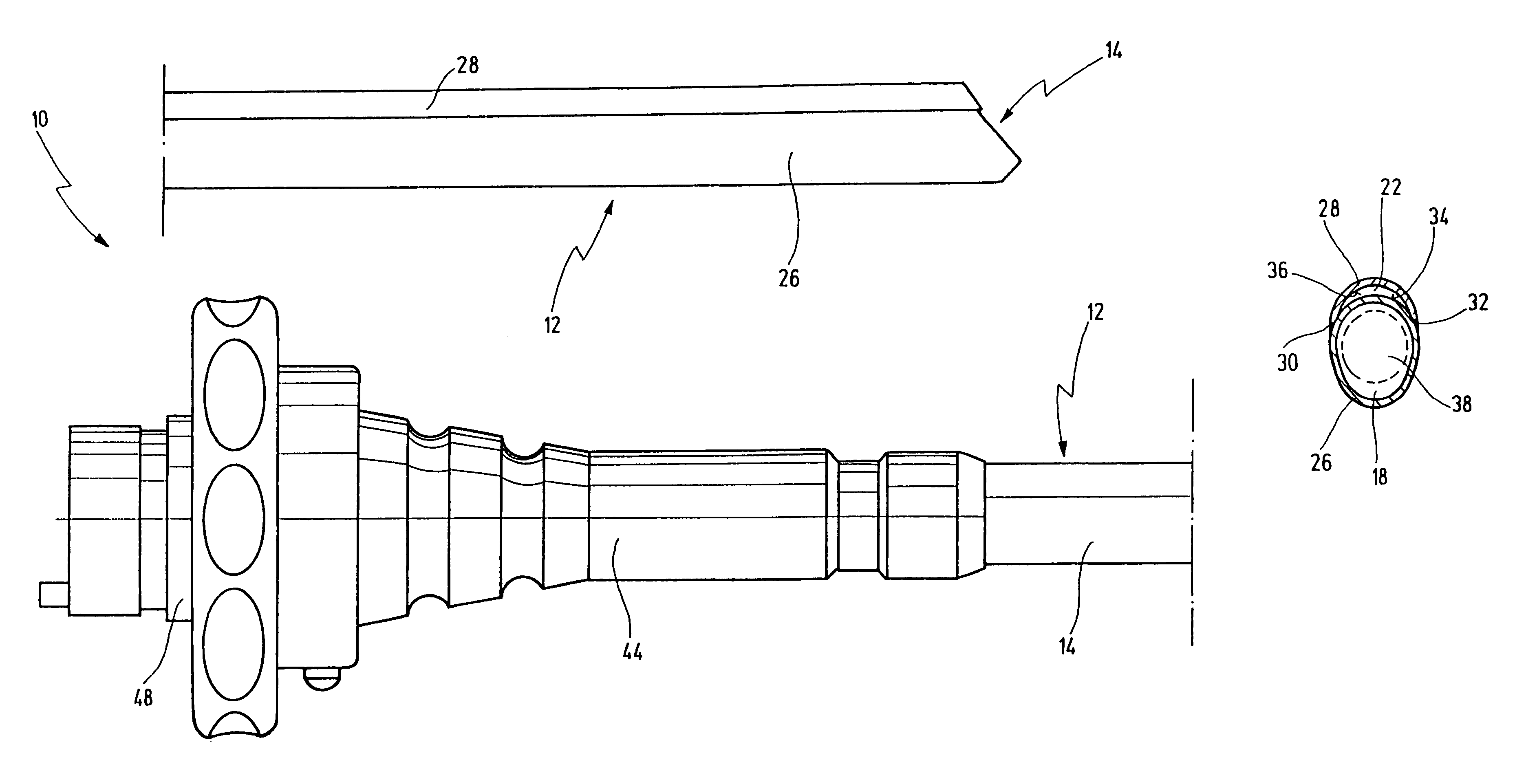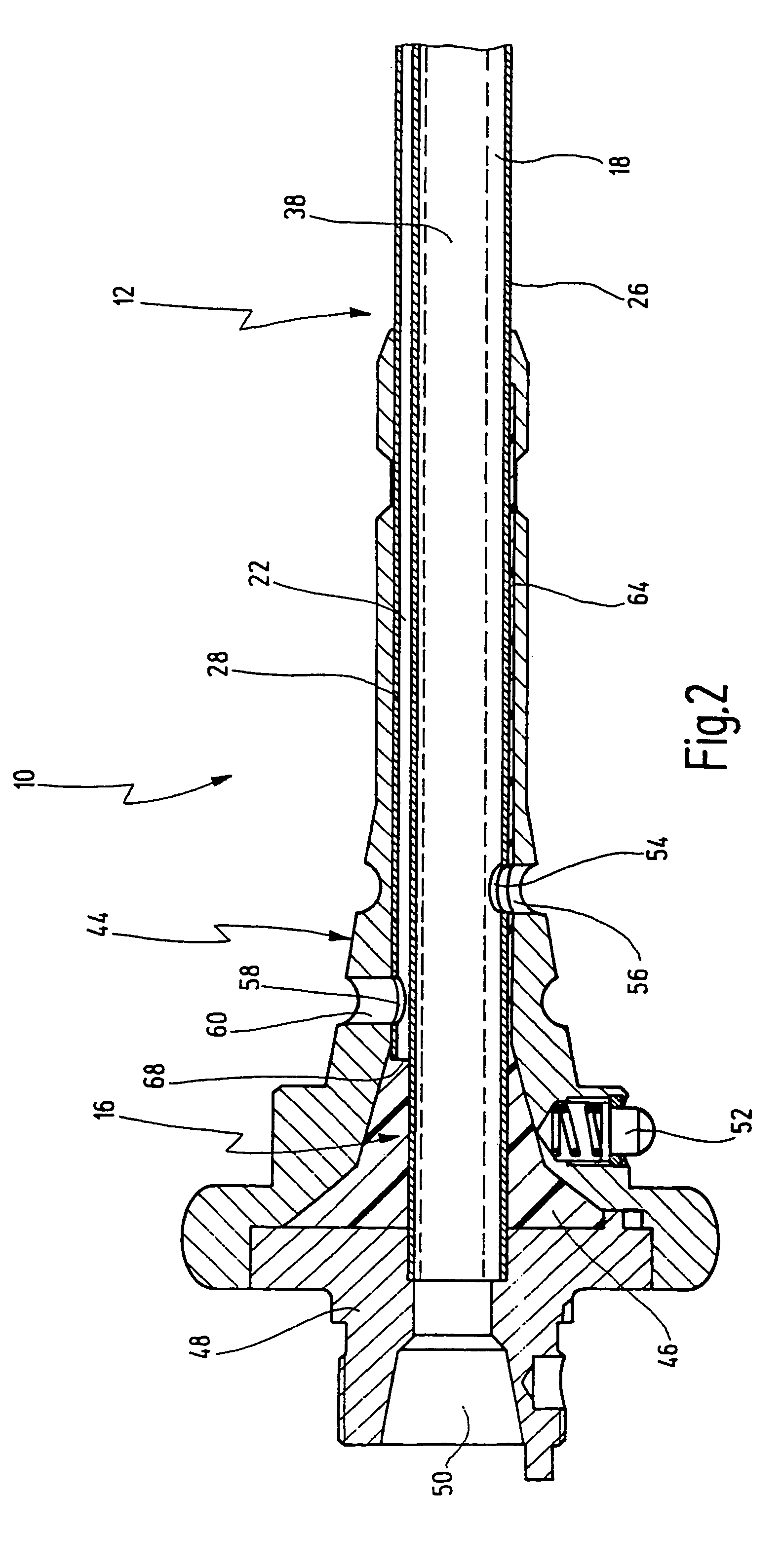Medical instrument for suction and irrigation, and method for its production
a technology for medical instruments and irrigation, applied in the direction of dilators, applications, infusion syringes, etc., can solve the problems of less flexural stability of individual tubes, difficult handling of instruments, and wear, and achieve the effect of easy production
- Summary
- Abstract
- Description
- Claims
- Application Information
AI Technical Summary
Benefits of technology
Problems solved by technology
Method used
Image
Examples
Embodiment Construction
[0060]In FIG. 1, a medical instrument for suction and irrigation is designated overall by reference number 10 and shown in two partial views. The upper partial view in FIG. 1 shows a distal portion of the instrument 10, and the lower partial view shows a proximal portion of the instrument 10 contiguous to the distal portion.
[0061]In surgical procedures, particularly in the field of minimally invasive surgery, the instrument 10 is used for delivering irrigation fluid to an operating site and for suctioning fluids and tissue residues from the operating site. The instrument 10 also permits visual monitoring through an endoscope, as will be described below.
[0062]The instrument 10 has an elongate shaft 12 with a distal end 14 and a proximal end 16 (cf. FIG. 2).
[0063]The shaft 12 has a first channel 18 which serves as suction channel and which accordingly has a suction opening 20 at the distal end 14 of the shaft 12.
[0064]The shaft 12 also has a second channel 22 which is separate from th...
PUM
 Login to View More
Login to View More Abstract
Description
Claims
Application Information
 Login to View More
Login to View More - R&D
- Intellectual Property
- Life Sciences
- Materials
- Tech Scout
- Unparalleled Data Quality
- Higher Quality Content
- 60% Fewer Hallucinations
Browse by: Latest US Patents, China's latest patents, Technical Efficacy Thesaurus, Application Domain, Technology Topic, Popular Technical Reports.
© 2025 PatSnap. All rights reserved.Legal|Privacy policy|Modern Slavery Act Transparency Statement|Sitemap|About US| Contact US: help@patsnap.com



